All last Wednesday, on a bright green field behind Pacific Union School, bunches of kids -- mostly girls -- between the ages of 11 and 14 manipulated soccer balls with a French accent.
"We must jungle," they joked, mimicking their French coaches affectionately, when it was time to practice juggling the ball -- keeping it in the air with toe, thigh, knee, head, ankle, heel.
But it wasn't just linguistics -- their entire bodies were learning French. The kids were taking part in an inaugural cross-pollination of soccer skills and philosophies in which they received intensive skills training from professional French soccer coaches, and the French soccer coaches gained insight into the robust enthusiasm with which Americans apparently approach the sport.
How did this come about? How did 25 kids from Humboldt County end up getting to spend an entire week incessantly practicing and polishing their Maradonas, their Cruyffs, their Zidanes and other famous-soccer-player-named moves with these high-level French professionals? With Yves Lledo and Cedric Schweitzer -- coaches for the French pro team Racing Club de Strasbourg and its associated youth programs, which has produced World Cup stars as well as the famous coach of the English professional football club The Arsenal, Arsène Wenger? With -- even more exciting for the girls -- Sandrine Ringler, a coach for France's U-20 (under 20) women's national team, an official with the women's French Football Federation, and who once played against American soccer great Mia Hamm?
And what's this talk of some of these kids going to Strasbourg, on the border of France and Germany, and Europe's capital, next year?
Blame it on Piakai. Last year, Yves Lledo was in America to set up a California-based version of his Racing Club de Strasbourg-associated youth soccer camp, Rêve de Foot, at the French American International School of San Francisco in Marin County. The principal of the school, whose son was on the state boys' under-13 national team, told Lledo he should check out one of his son's teammates, Piakai Henkel of Arcata.
Lledo watched the boy train, and was impressed. "Technically, he is well-educated," Lledo said last Wednesday as he watched the clinic participants practice behind Pacific Union School. "However, he has much work to do on the mental game and becoming physically stronger."
As luck would have it, Piakai could speak conversational French; his mother is fluent. Lledo invited him to come train in Strasbourg in the youth sport education program attached to the pro team Racing Club de Strasbourg. There, he would study not only soccer, but sports nutrition and medicine and other related topics as well as regular academic subjects.
In late fall, Lledo came to Arcata to persuade Piakai's parents that this was a good idea -- he could come for a semester, as a trial, see how he liked it. And maybe, someday, he'd even make it onto Racing Club de Strasbourg. Or, come back and kick some serious ball in the United States.
Piakai's parents -- Mimi Mei Lin Chin and Terry Henkel -- agreed to let him go, and away he went.
Now, it'd be most fun to hear Piakai's story directly from him. But, at the time of this writing, the 14-year-old was actually on a break with his parents in the Guyanan bush, where they've been doing scientific research.
But let's back up. When local educator Nick Parker, who runs the FC Samoa soccer academy and also lectures part-time in the education department at HSU, heard that Lledo would be in Arcata to talk to Piakai's parents, he decided to ask Lledo to come back this year to coach a clinic. It was perfect, really: Here was a French soccer maestro, coming to town, and Parker just so happened to have been trying to build up his relatively new academy based upon the principles of French soccer school-style training.
"And while he was here, he and I agreed we should try to create a relationship between our two clubs and our two cities," said Parker last week as he watched the French clinic from the sidelines.
The clinic was the first step. The second would be getting a group of under-13 -- U13 -- girls together, and some boys if there were enough candidates, to go next year to a one- or two-week clinic at Lledo's Rêve de Foot ("Soccer Dream") camp in Europa Park in Germany, about 30 miles from the border with France at Strasbourg. Already, local teachers Jack Bareilles and Carolyn Bradish-Bareilles, experienced foreign exchange organizers, are planning how to organize and raise money for the trip.
At noon each day of the clinic, the coaches and kids took a break to go eat lunch in the courtyard of Pacific Union School's campus. Last Wednesday, at lunchtime, the coaches seemed exhausted; before coming to Arcata, they'd taught two weeks of clinics in France and another week-long clinic in Marin County. Ringler sat against a shaded wall of a building, writing in a notebook. Schweitzer dozed, flat on his back, on one of the narrow concrete picnic table benches. And Lledo sat at the same table, eating a bagel and gazing into space.
Meanwhile, the air buzzed and sparked with the high, happy tones of the 20 girls and five boys participating in the clinic. Here and there sat groups of girls, talking and laughing as they ate. On one nearby field a boy dribbled and juggled a ball by himself. And before it was even half past noon -- they had a whole hour to relax and eat -- every single kid, as if of one mind, was on the move out to the main, far-off field to practice the new skills, one group of three girls playfully dodging the pivoting sprinklers along the way. The coaches stayed behind, but noticed.
"I think children love sports here," said Cedric, who had woken up. "Here, they eat 10 minutes and then run back out to play. And they play alone! Without coach! In France, the kids are not so sporting."
After practice officially started back up, FC Samoa coach Parker again watched their progress.
"They really enjoy coaching the American kids," said Parker of the French coaches. "They say the American kids pay more attention, they're more respectful and they're more disciplined than the ones they coach in Strasbourg."
Maybe that's because in France the sport sees a greater mingling of diverse cultures and languages, as well as socioeconomic levels. Here, said Parker, soccer often appeals to people from a similar demographic -- middle to upper-middle class (and often largely white, although there is a strong Latino soccer tradition).
Parker said other countries also are impressed with American sports conditioning techniques, and with the highly developed health and fitness culture in California.
But soccer instruction in France is more formalized, following a system of "age-appropriate" teaching that can be more child-friendly, Parker said. In France, a child might start soccer at 5 years old -- and Americans can start at a young age, also -- but competitive play is a long way off. First, the French student learns to get comfortable with the ball.
"I use the term ‘mastery of the ball,'" said Parker.
J.D. Davidson, who had joined Parker on the edge of the field to watch the French clinic, added, "I think first is the love of the ball, then the mastery. At age 2 or 3, you see a ball -- it's a toy."
Davidson coaches with the Mad River Youth Soccer League, based in McKinleyville; young Piakai Henkel trained with him there and joined his competitive team, The Steelheads, at age 9.
He explained that, in France, from age 8 to 13 a soccer student spends a lot of time with the ball alone, and eventually graduates to playing one-on-one. And the Coerver method, after the famous Dutch soccer coach Wiel Coerver, is popular.
"The Coerver style is like dancing with the ball," said Davidson.
Coach Lledo, who had left the field briefly to partake in the conversation, pretended to juggle a ball with his feet, hopping foot to foot while pointing at toe, heel, ankle.
"Toucher le ballon," he said. "Lots and lots of touches with all parts of the shoe."
That's a lot like Piakai plays, noted Davidson. Piakai, who is home schooled, spent a lot of time practicing alone at home, just goofing around with the ball. Actually, Davidson equates Piakai's style to the Brazilian "street soccer" style. "He likes the moves and the flare and the flashiness," he said.
Davidson said Humboldt County, actually, seems to generate that style of play. "I came from Southern California," he said. "Soccer in Humboldt is unique. It's a more relaxed, more accepting and inclusive soccer culture here. It's still competitive -- but it's just a game."
In France, kids might play practice games of five on five when they're very young, and slowly progress to seven on seven. Competitive 11 on 11 play is not rushed into.
Formal American youth soccer often places the development of the team first, said Parker. Parker grew up playing in North London, where the style of teaching "was heavily biased toward sacrificing individual creativity and critical thinking to the short-term needs of the team -- to win the big game on Saturday. ... The French philosophy is that learning soccer is an intellectual and educational process, and that soccer and critical thinking should never be mutually exclusive."
It makes sense: In soccer, unlike many sports, the coach can't call a timeout to feed his players a new strategy. There is no timeout. So players have to think for themselves.
"First you must master the ball," said Parker. "Then you must master the opponent one-on-one. And then, grasshopper, you're ready for the team game."
Wednesday night, at a dinner at the Samoa Women's Club, the lights were out and parents, kids and fellow coaches fixed their eyes on the front of the room, where Sandrine Ringler was pointing a stick at the video projected onto a white screen. A tiny, curly headed girl had command of a soccer ball and was juggling it with her head. One, two, three, four --
"Five!" said a little boy in the audience, turning excitedly as he said it to flash a hand at his mom.
The French coaches, in halting English, were taking turns explaining their missions. Schweitzer would discuss the French style of coaching boys -- and how, in France, so many boys signed up to play soccer that there weren't enough coaches or playing fields to accommodate them. Lledo would make a pitch for his Rêve de Foot camp at the Disneyland-esque -- but multiculturally focused -- Europa Park.
But first, Ringler was describing the poor attitude her countrymen have toward girls' soccer -- and how it's her job, at the Women's French Football Federation, to change that. In France, she said, about 50,000 girls play soccer; at least that many play in Sacramento alone. She hoped to bring convincing tales of California back to French clubs, parents and coaches.
Earlier that day, out at the field behind Pacific Union School, Ringler had talked more about this. France has a national women's team, and it competed in a World Cup in 2003. Nevertheless, she said, "in France, in the [soccer] camps, you will see 15 boys to one girl. Because, almost all parents, and a lot of people who coach, and the soccer clubs, they think it is only for the boys. Not for woman. And it's very difficult to say to parents, ‘It's OK for a girl to play soccer and still be a girl.'"
If a little girl wants to play soccer, French law dictates she must play with the boys until she is 12. That's what Ringler did -- but she's different.
"Les petites, the little girls, there are a few who want to play with boys," she said. "But not a lot. Most begin when they can play with only girls -- and by then it's too late to start."
She started playing soccer when she was 6, with boys. Once she was 12, she had even fewer options. She couldn't play with boys anymore -- it was against French law. And there were only a few isolated women's clubs around. Her parents drove her 30 miles to practice with one club until she was 17. After that they drove her farther, three times a week, to play with another club.
"At 12, I play with big women," she said. "[There was] no young girls' team."
In contrast, in America (and Germany, said Ringler), lots of girls are signing up. Parker attributes American girls soccer popularity partly to the 1983 U.S. law known as "Title 9" that requires colleges to have equal numbers of men's and women's teams.
"Here, I'm happy," Ringler said, drawing an exaggerated grin with her fingertips as she gazed out to where gangs of girls were skittering up and down the green grass with balls dancing about their bodies.
The clinic was a success. One player, 13-year-old Ellen Thompson, still looked intensely focused at the end of last Thursday's session. She described herself as very competitive.
"I learned how to shoot better, and to control passing, and I really did a lot of juggling," she said.
Parker, too, was pleased. And now he had to keep the French momentum going at FC Samoa.
It won't be easy. The year-round academy, which so far has drawn up to 35 kids, is nonprofit. And Parker aims to pay his professionally trained coaches.
The various leagues in Humboldt County, in contrast, put a couple thousand kids on the field each week, about half of them girls -- and all of it is volunteer-run, although parents do have to pay for uniforms and travel.
Parker said he's trying to keep his academy fees low.
"I don't want soccer to become exclusively middle class," he said. "An academy in Santa Rosa costs $150 a month. I'm not willing to go there. Our base fee is $30 a month. And we are committed to being grant or donation based so we don't rely on being parent funded."
The academy tends to draw more into-it players, who want to improve their skills outside of team play -- players like Hayley Warren, 12, who does FC Samoa training and also plays for the Eureka Breakers, and who was in last week's clinic. Or Emma Gomes, 11. Last Wednesday, Gomes and her siblings -- Ben, 6, and Anna, 13 -- were walking back to the parking lot with their mom, Amy.
"This is her life," Amy Gomes said about Emma. "She wants to go to college where Mia Hamm went to college."
Bruce McCarthy, president of FC Samoa and a teacher, who was at the dinner last Wednesday night, has had two daughters in Humboldt soccer leagues over the past 10 years. He likes the "school-like program" of the academy. He also sees soccer as a ticket to the future.
"I'm a big proponent of higher education," he said. "We can use soccer as a vehicle for kids to get through high school, or to get to a four-year university or even a two-year college."
Or even farther.
"There are only a few common denominators in this world," Parker said. "One is money. One is love. One is the increasing use of the English language. And one is soccer. Wherever you go in the world, you can have friends by 6 p.m. if you play soccer. It's a common language."
In the cloud-bright light that illuminated the green field, swarming clumps of kids in bright clothing swung one way then the other, merging and splitting, like flocks of birds. Amid them, propelled by the twisting and leaping bodies, a dozen soccer balls bounced and rolled, sailed, shot forward, punched the air or jerked along the ground.
It looked like orchestrated chaos. It looked fun.
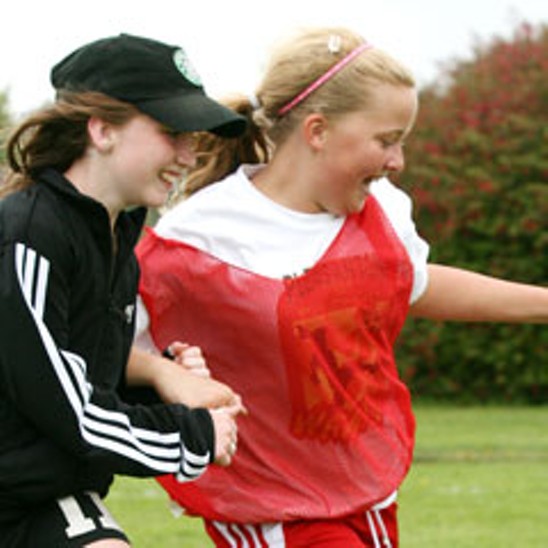
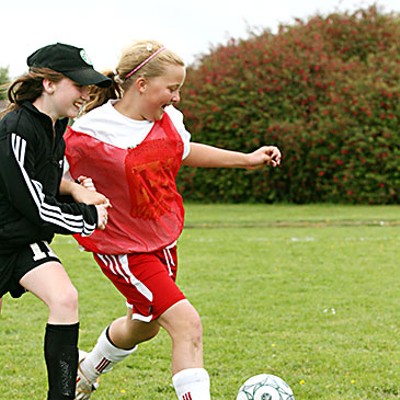
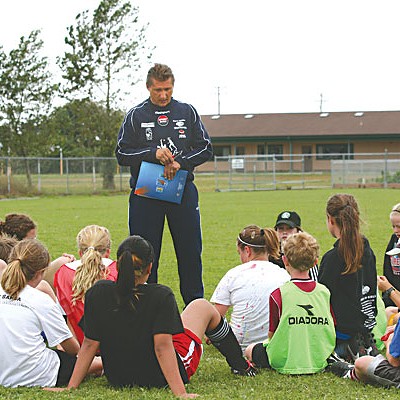
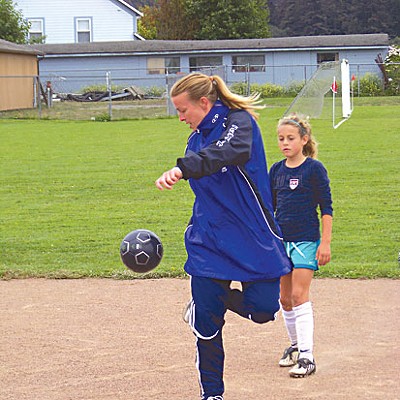
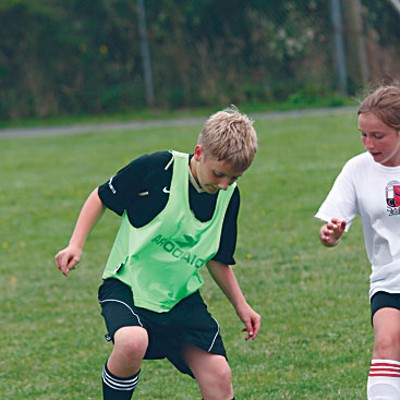
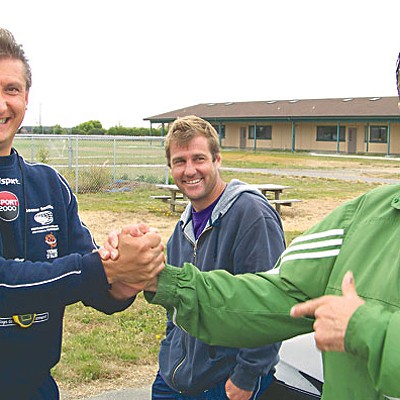
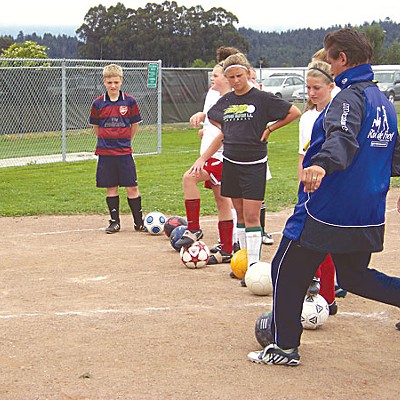
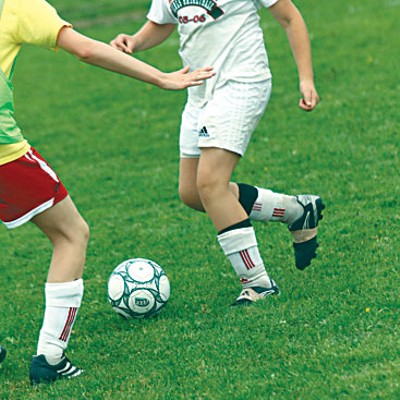

Comments
Showing 1-1 of 1